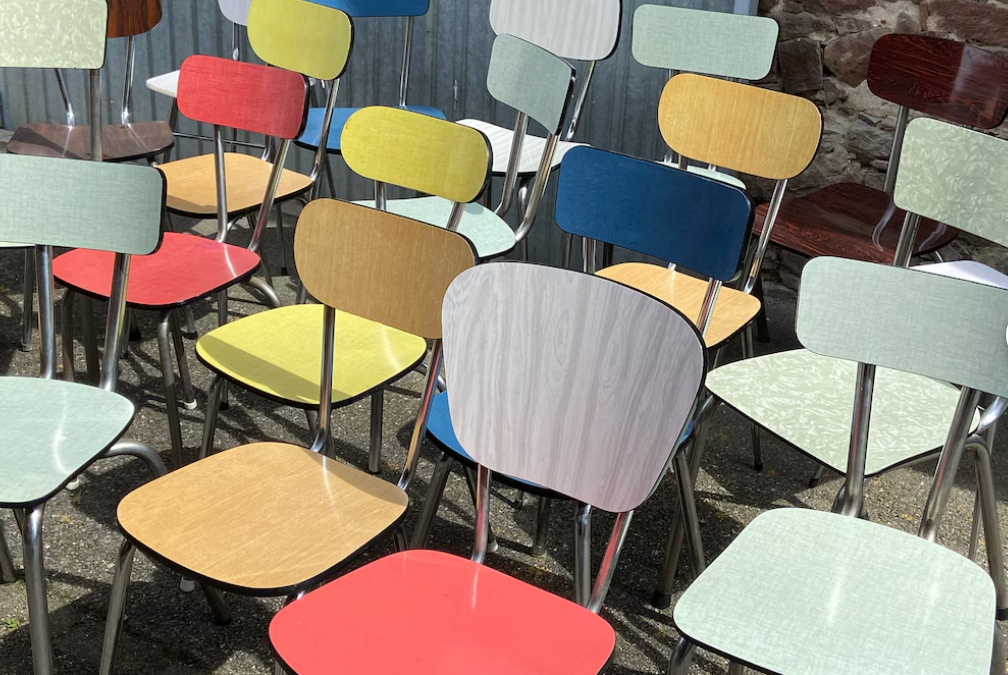Why bother with spending so much time on a chair when, basically, they all serve one basic function? And yet now we want more, sustainable design requires that we look into more aspects than just aesthetics and of the thousands that are created each year how many are truely sustainable?
Some will be patented, some will not. Some will be designed by archistars, some will be homemade.Some will be made from healthy materials, and others—who knows? There is no limit to creativity.
But all chairs need to fulfill one essential function: to be a place where humans can sit and rest.
Chairs as Cultural Symbols
Chairs are deeply embedded in our cultural consciousness. They go beyond their functionality as a place to sit—they are symbols of various social and cultural values. For instance, the rocking chair, often associated with comfort and relaxation, evokes images of home, family, and nostalgia in American culture. Meanwhile, the bean bag chair, a product of the 1960s, represents the era’s break from tradition and its embrace of informality and countercultural movements.
In different cultures, chairs take on various meanings. In Japan, for example, traditional interiors often feature floor seating, reflecting the cultural value of simplicity and harmony with nature. The introduction of Western-style chairs into Japanese homes during the Meiji period marked a significant cultural shift and the influence of Westernization.
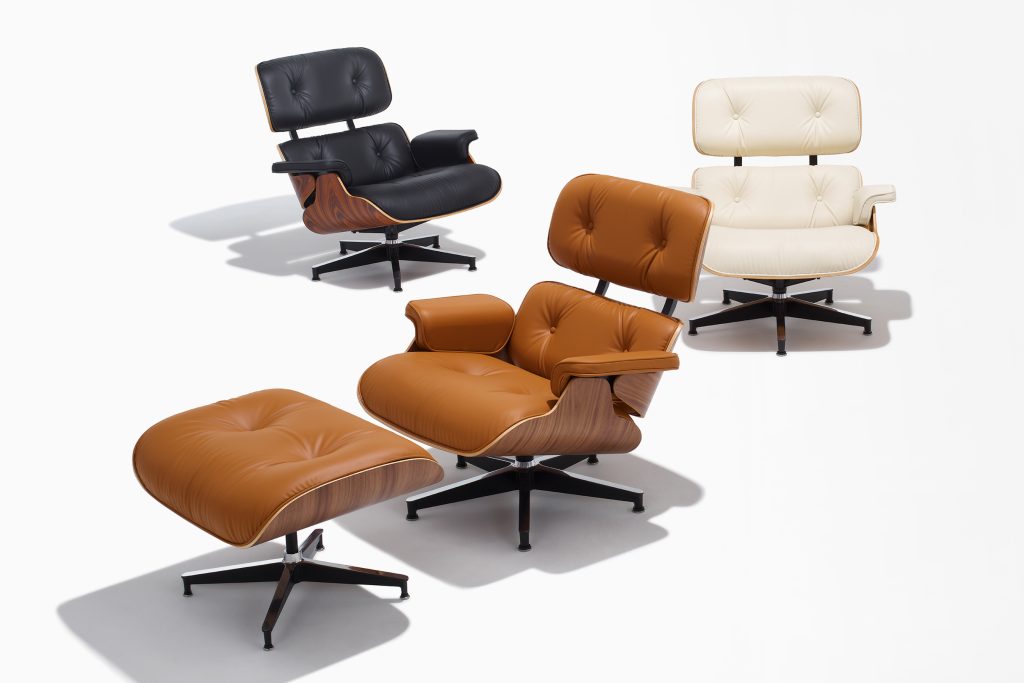
Sustainable Eames Lounge and ottoman photo credit courtesy of Miller Knoll
In the modern era, the design of chairs continues to reflect cultural trends and technological advancements. The Eames Lounge Chair, designed by Charles and Ray Eames in the 1950s, is a prime example of mid-century modern design that combines comfort, style, and innovation. Its use of molded plywood and leather was revolutionary at the time and reflected the post-war era’s optimism and forward-looking attitude.
Today, it has embraced sustainable design practices. As Noah Schwarz, Vice President of Product Design for Herman Miller, explains, “Today, Herman Miller is among the first furniture brands to offer a plant-based leather alternative and the structure made almost entirely from bamboo. The two materials come together in the latest offering of the iconic Eames Lounge Chair and Ottoman, upholding the aesthetic and quality standards that have defined the chair for nearly 70 years.”
Chairs and Interior Design
The choice of a chair in interior design is a reflection of personal taste and cultural trends. Designers and homeowners alike use chairs to make statements about their values and tastes. An ornately carved chair might suggest a love for tradition and opulence, while a sleek, modern chair could indicate a preference for innovation and minimalism. Regardless of the choice, many of us have a favorite chair that holds a special place in our hearts.
How often have you said or heard the phrase, “Hey… that’s my chair!”? Have you ever felt an emotional connection to a specific chair because it reminds you of someone? I confess I still have my father’s old armchair, and I smile thinking of him every time I sit in it.
Some chairs bring back memories, and this was the spark for me to write this article. I was walking through a flea market when I came across someone selling a series of old Formica chairs, and this immediately threw me back to the refectory at school and all the memories that go with it. And yet, these chairs, which may not be made from natural materials, can be recycled and brought back to life. By doing so, we avoid the landfill and give them a new purpose, aligning with the principles of sustainable interior design.
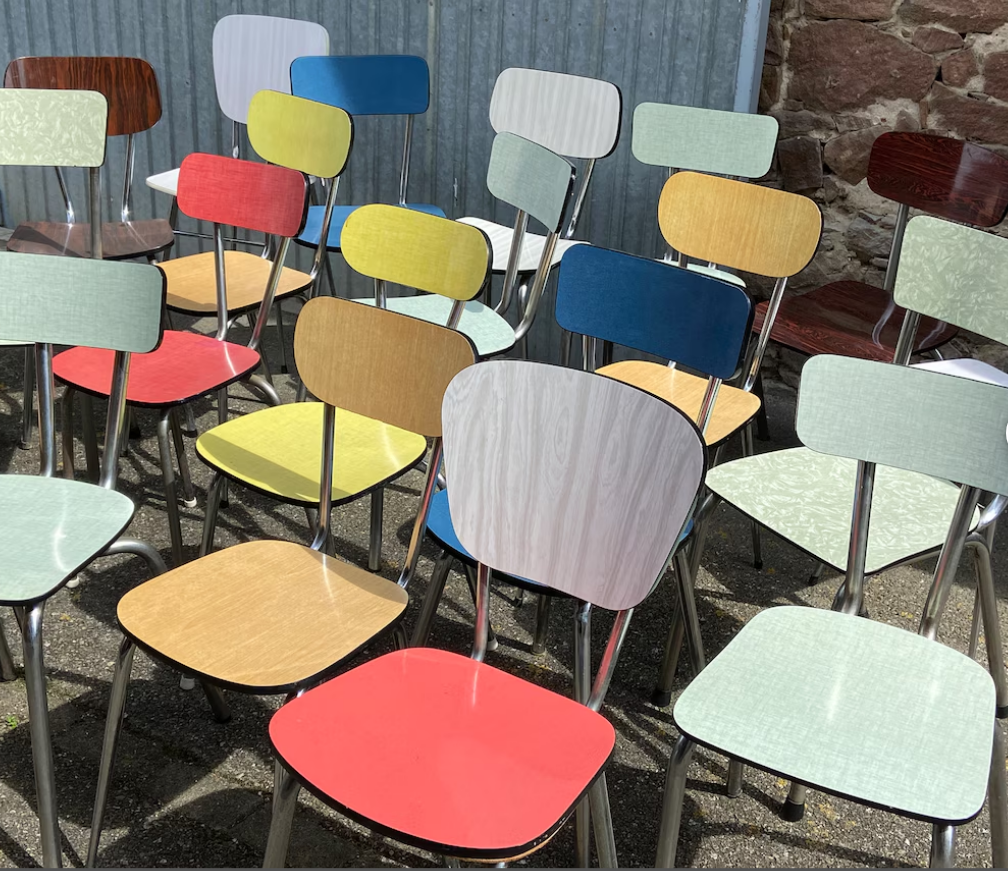
Formica chairs I found in a flee market – that bring back fond school day memories
My personal curated selection
Although I am very fond of Eames and am delighted by them embracinng sustainability and healthy materials there are a few more of my personal favourites I would love to share.
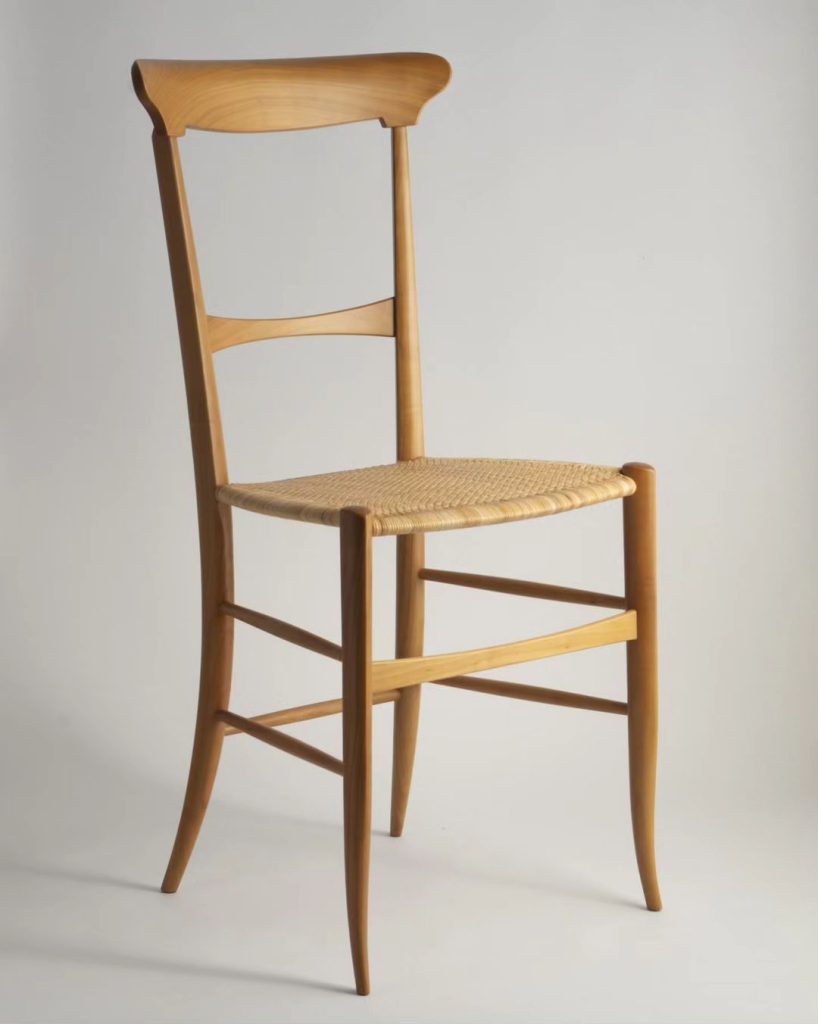
This is the classica style of super light chairs produced in Chiavari – on the Italian riviera . Known as “Chiavarine”, today they are still built by “Fratelli Levaggi” who have been handmaking these chairs for generations. Traditionally made in beechwood and the seat in handwoven cane, the wood can be in different finished. In a similar style you can also get stools and my personal favourite the two seater bench. I find all the models convey that timeless elegance typical of understated luxury and can be placed both in modern and traditional design
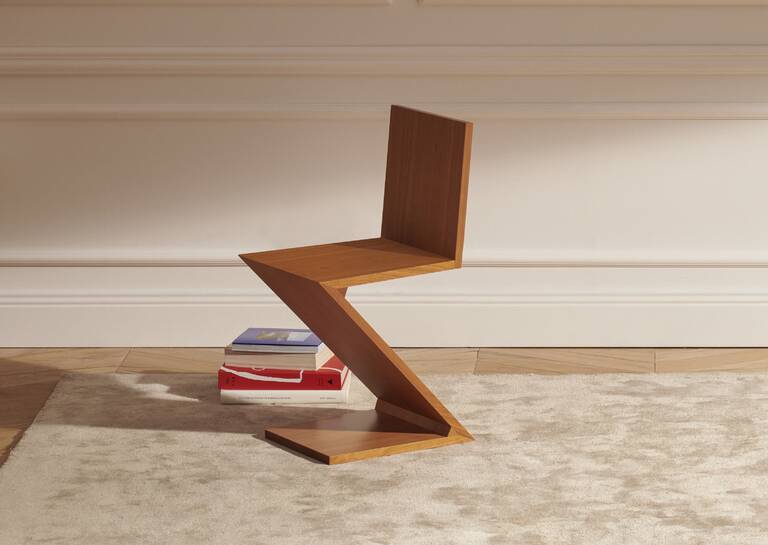
Here I feel I am slightly contradictory because I do not believe it is the most comfortable of chairs, however Cassina’s zig Zag chair by Gerrit Thomas Rietveld designed in 1934 is an absolute icon and represents one of the first examples of a cantilevered solid wood chair, formed by four flat pieces of wood joined in rhythmic sequence to create an extremely sophisticated appearance of instability ( no nails required !).
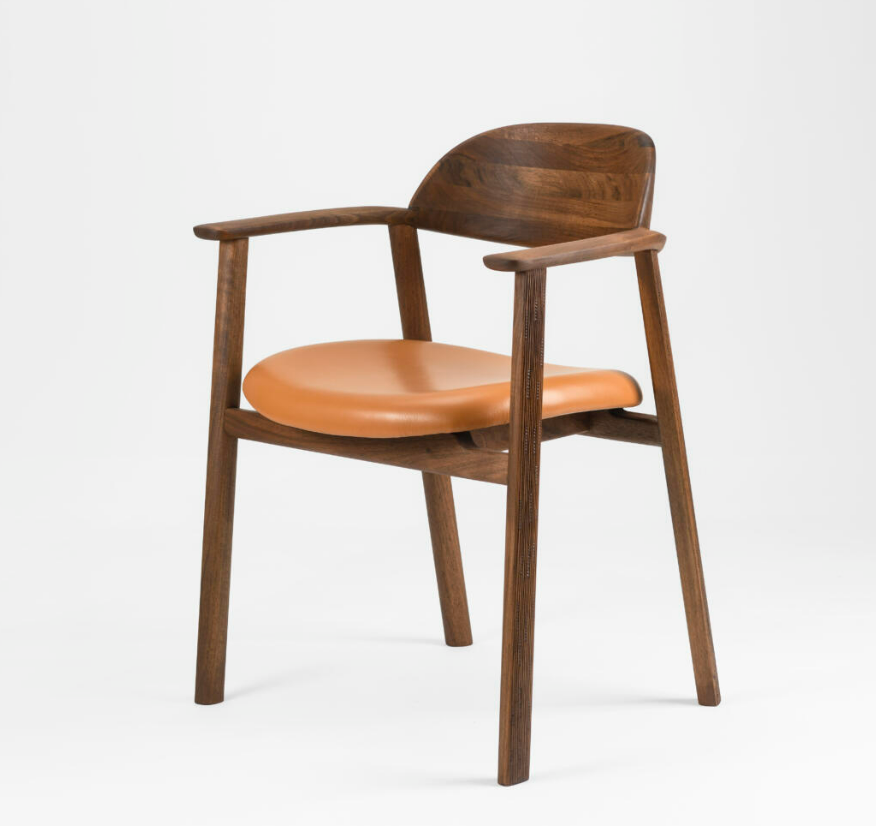
Add because I do love to sit down comfortably at the dinner table, eat good food and spend quality time with people I care for, chatting and enjoying the moments; I choose Mati by Zanat designed by Sebastian Herkner. Comfortable dining chairs contribute to pleasant atmosphere. Thus, the name Mati (meaning mother in archaic Bosnian, Croatian and Serbian) was chosen to symbolize the chair’s motherly seating comfort. Mati features a graciously curved armrest that envelopes around the backrest. Another design feature are the chair’s legs, curved on the inside, but cut flat and hand-carved on the outside.
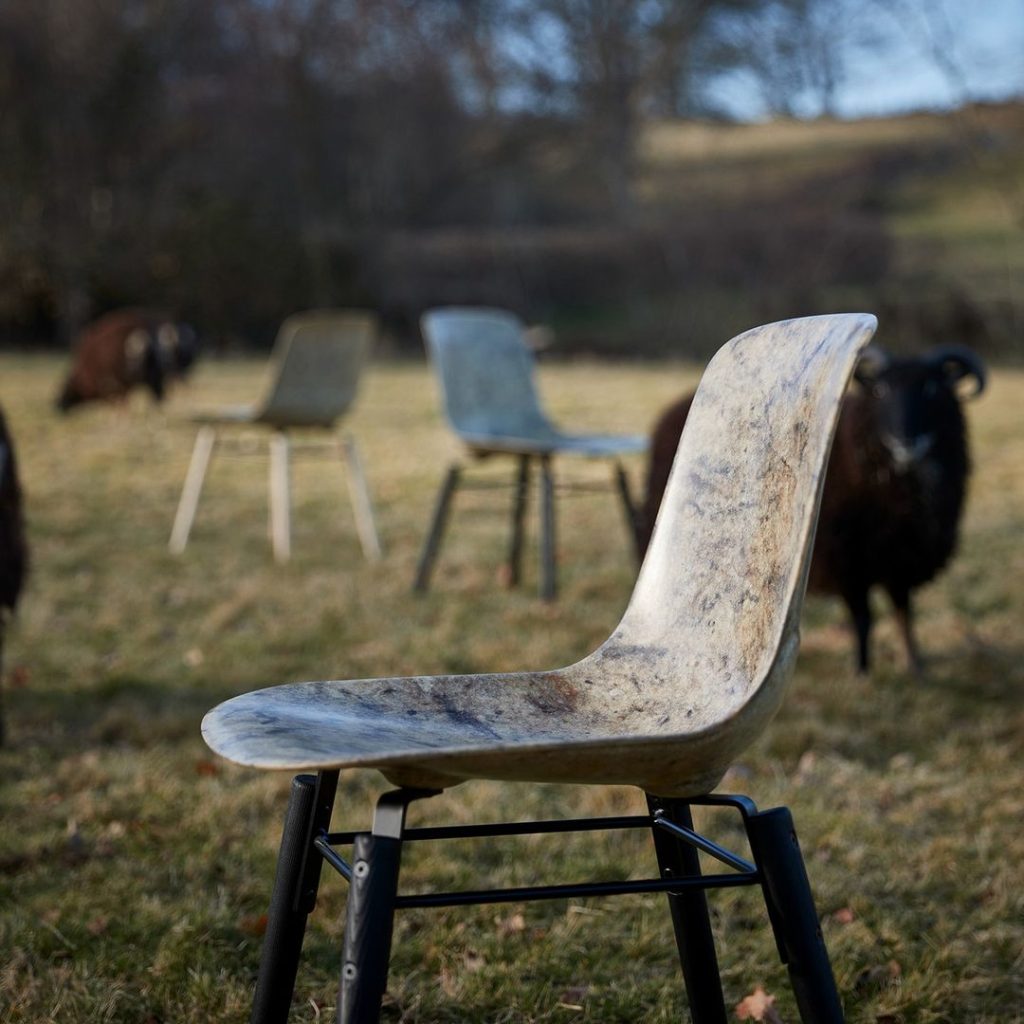
For my love of unique craftsmanship and their incredible talent – I discovered Solidwool through the Journal of biophilic design, so I had to find out more. Solidwool is made in the UK using British wool and bio-resin. Think fibreglass, but with wool. The fleeces they use are from both the Welsh Mountain and Herdwick breed – plentiful, yet there is little demand for this coarse, robust and wiry wool. Both breeds are native to the UK, and have been for centuries, so, according to Solidwool and I couldn’t agree more, it is important to keep these sheep and their shepherds in the landscapes they belong. By using traditional, hardy breeds they are supporting British farms and reducing the carbon footprint of their product. And so the Henbury chair was created , followed by other unique pieces of small furniture.
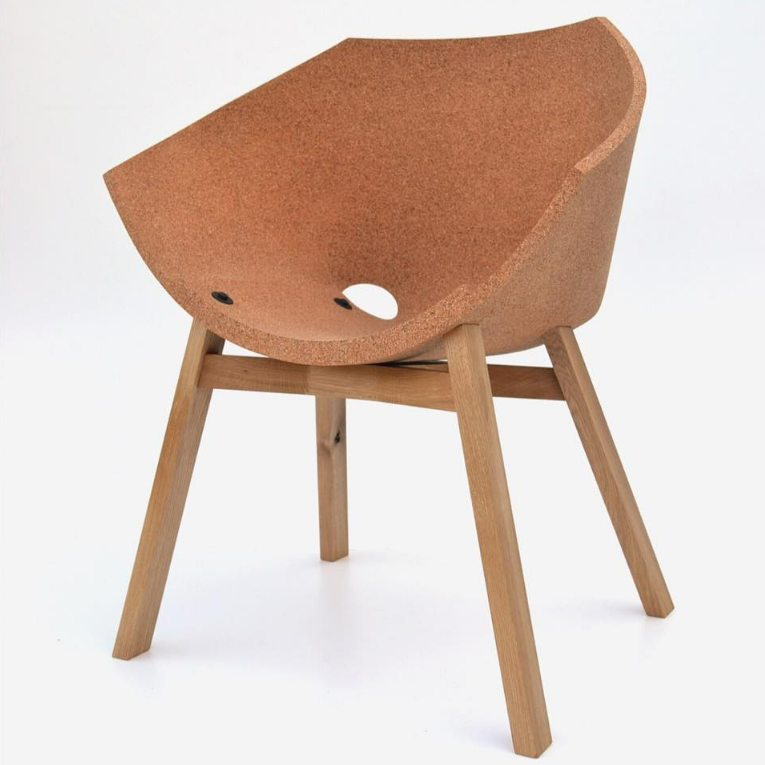
Corkigami by Carlos Ortega Design, although not a new project (2013) I rather like it; not only for it’s obvious sustainability (cork being and extreemly sustainable material), but also for its ingenious design. The name Corkigami is the combination of the word cork and the Japanese word origami. An origami is a Japanese technique of folding paper and this is the technique Carlos Ortega used to fold the cork sheet and create a seating; rather ingenious I think.
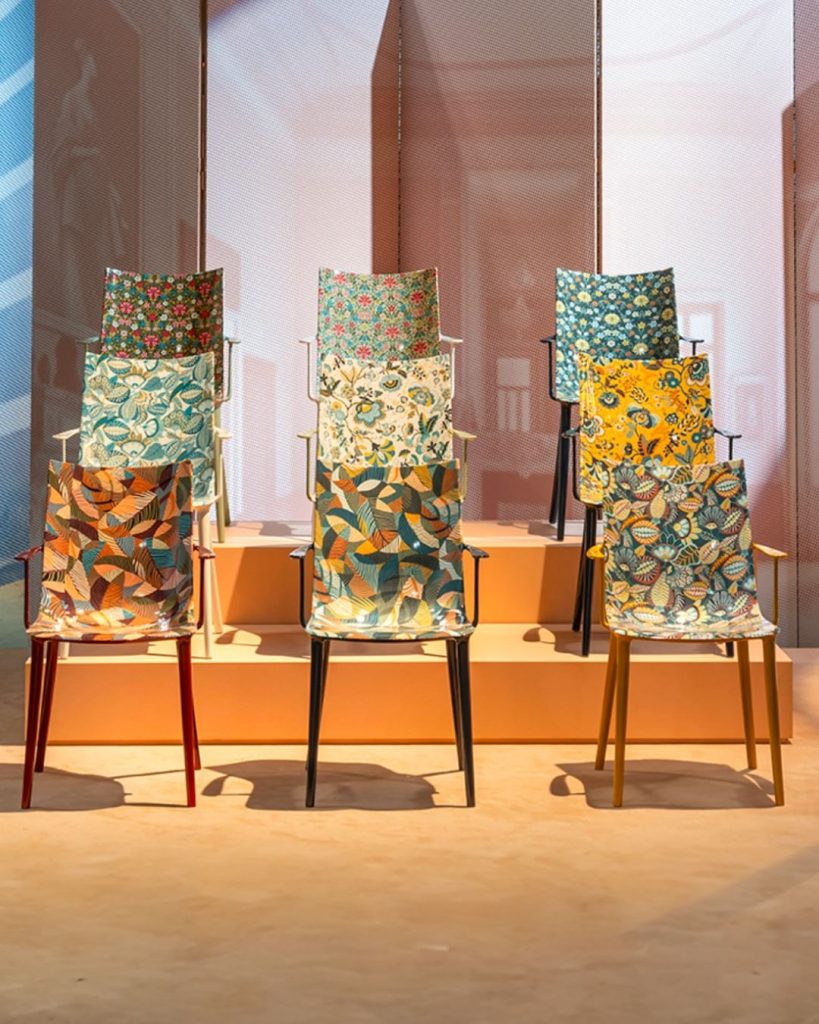
Although Kartell is not a typical “Biophilic brand”, Her Highest Highness – H.H.H. designed by Philippe Stark and in collaboration with Liberty – gives us an idea of what it looks like to bring nature and florel patterns to an object you may consider ordinary or should I say plain. presented during the Salone 2024 I found it gives a breath of fresh air amoungst the over minimalist proposals
There are ofcourse many more brands who design and produce exceptional wooden chairs, some bigger companies, some small local artisans . For this i cannot urge you enough to take a look around your area and support your community and enjoy the heritage and the materials it proposes
This is just a a short selection more to come for sure.
In the meantime why don’t you have a look at how to decorate your walls 5 Healthy materials to transform your walls at home – The Biophilic Hub
